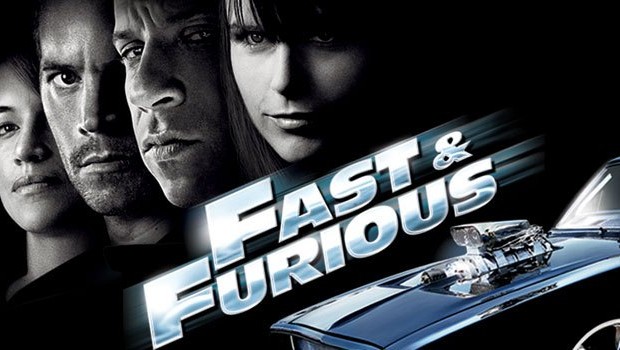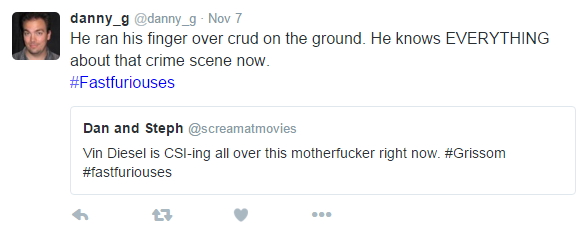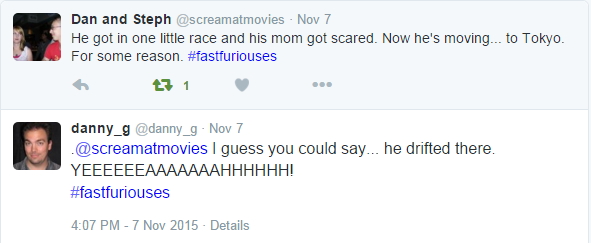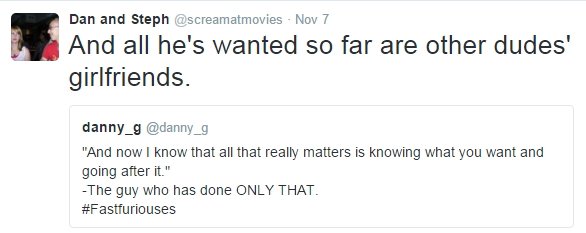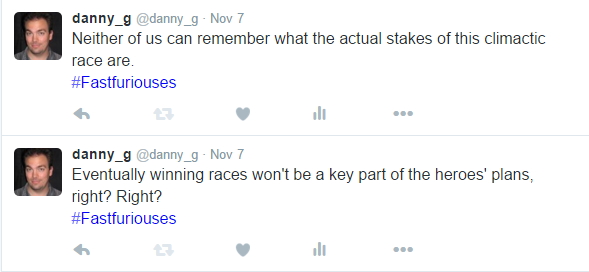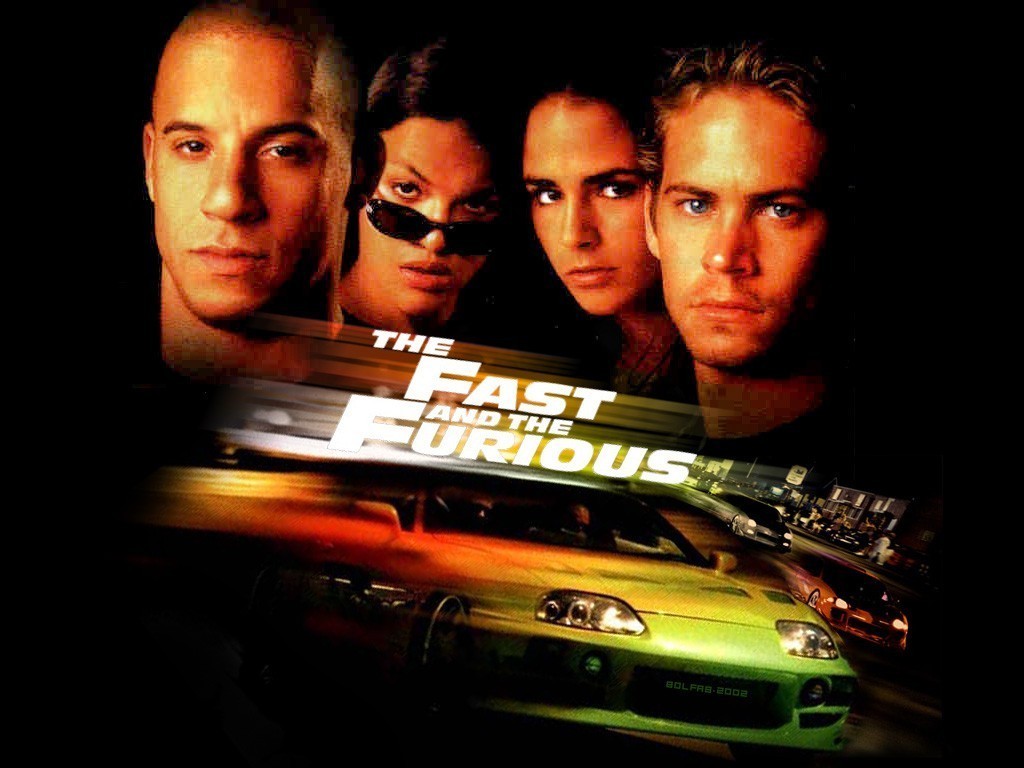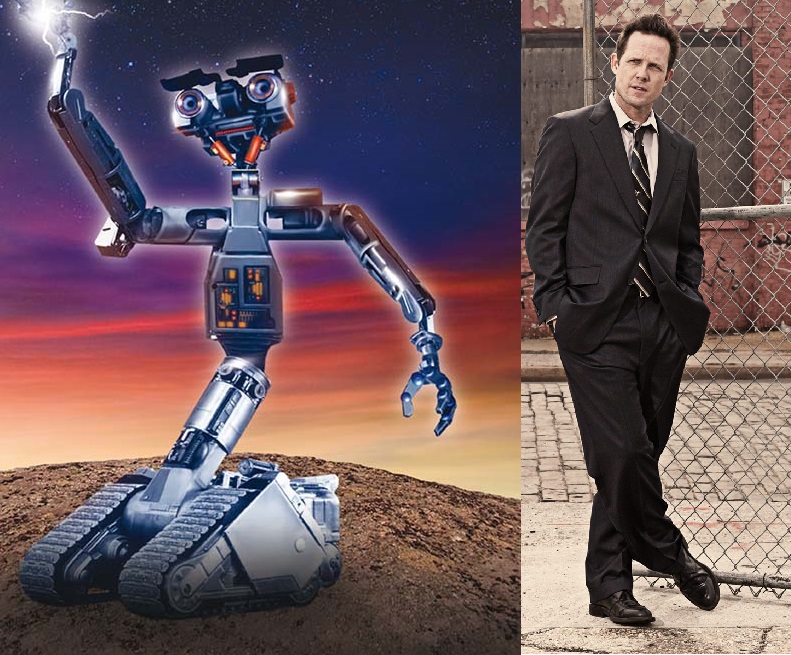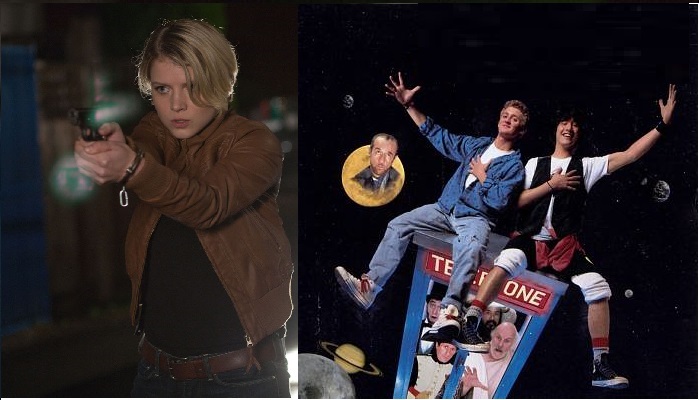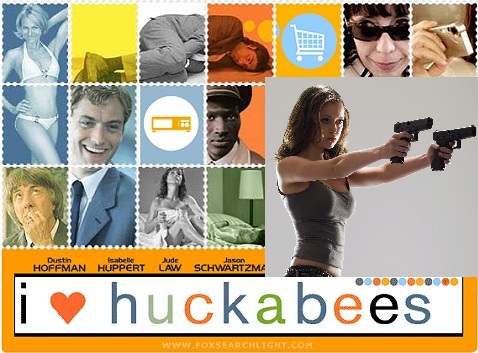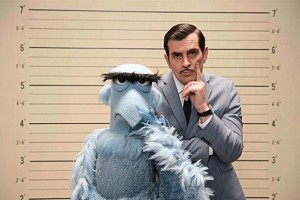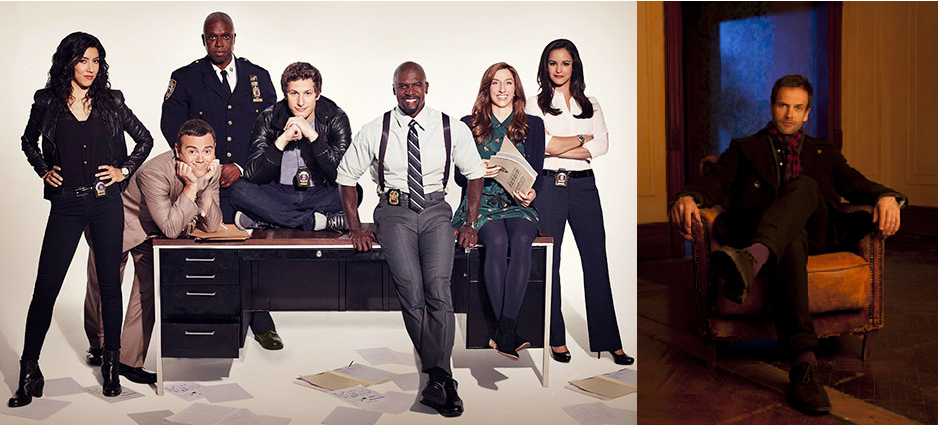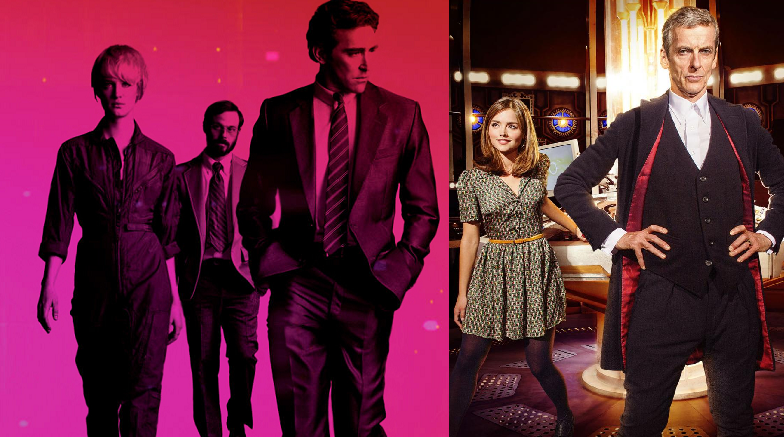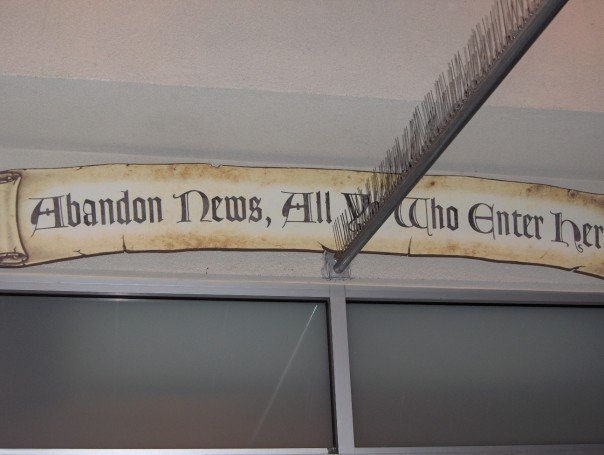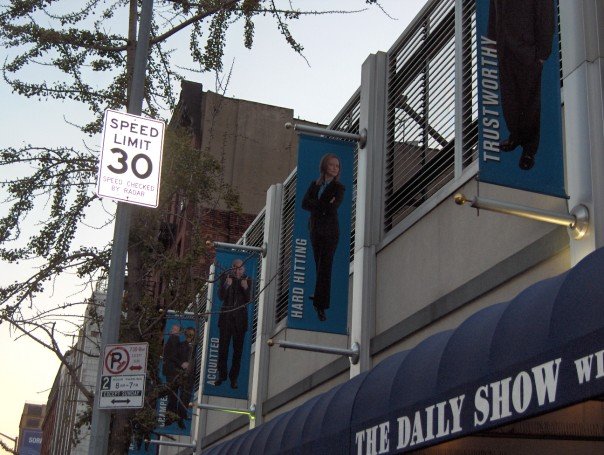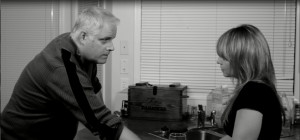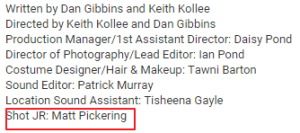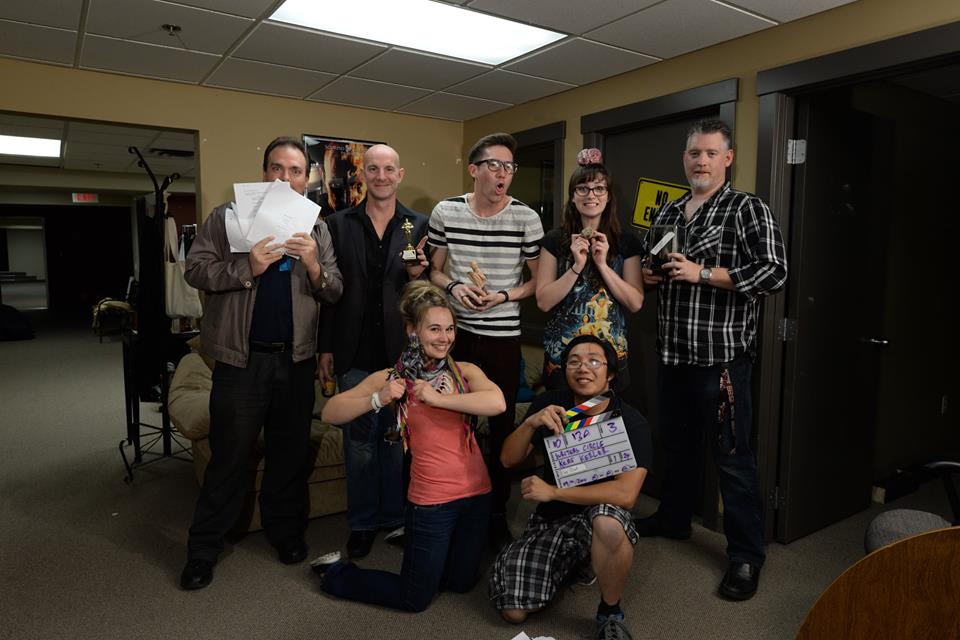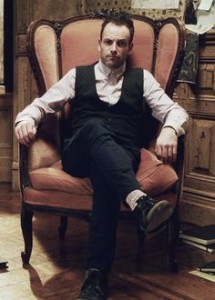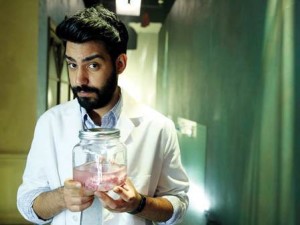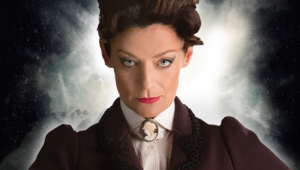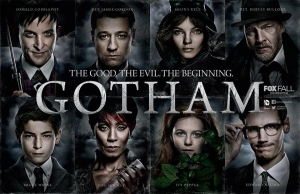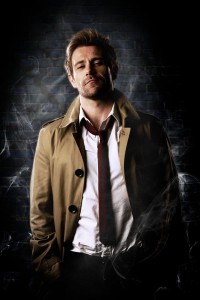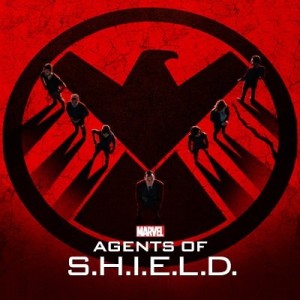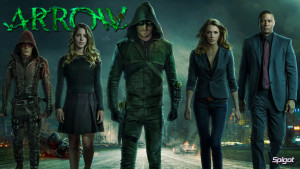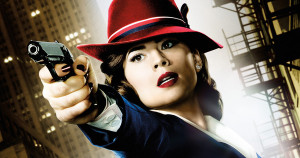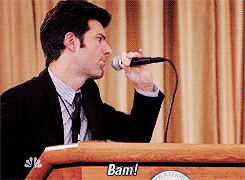Previously in the tales of people who are sometimes fast and sometimes furious about how they’re not being fast right now… Foghorn Leghorn impersonator/World’s Oldest High School Student flees to Japan to avoid prosecution for moving violations, and learns that his overwhelming narcissism, near-absolute lack of impulse control, and habit of solving all of his problems through illegal racing are, in fact, what life’s all about, and not massive personality flaws. Also the most interesting character is killed.
But you know what? Forget about all of that. Because the franchise sure did its best to do exactly that.
“New Model. Original Parts,” proclaimed the poster/teaser trailer, because eight years after the original sped through… theatres… come on, me, you’re better than that…
Eight years after a film crew attempted to remake Point Break but got, just, you know, super tired part way through and just filmed people driving in straight lines, all four of the original leads decided they didn’t have enough going on to keep turning down F&F sequels, and we kicked things back off with the numberless, stripped down “Fast and Furious.” Or as I came to see it, “The movie 2 Fast was supposed to be.”
We open with another highway truck heist, but in the spirit of franchise escalation, a slightly more active one. Instead of just driving next to/in front of the truck, then shooting out the windshield so as to hijack it, Dom and Letty (accompanied by Han from Tokyo Drift, who isn’t dead yet, and two Latino henchmen who only speak Spanish and whose names I never caught) pull up behind a truck carrying trailers of gasoline, which we’re assured is super valuable in Mexico, so that Letty can hook them to the crew’s cars, then separate them from the target truck by using liquid nitrogen to freeze and shatter the links.
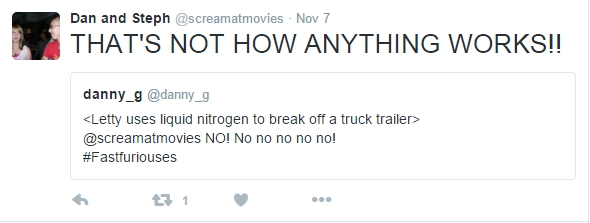
This is where we began using the phrase “physics-nopes,” which were any moment in which Dom’s vehicular murder of the laws of physics caused a swift and angry “NOPE” from Daniel. Or a shout of “No… NO… NO! NO! NO!” which was elicited by Dom gunning the engine just so in order to drive under the last truck trailer as it bounced its way down the road.
In the wake of the mostly successful heist, the crew hits the beach, where they talk of the growing heat surrounding Dom. The cops north and, presumably, south of the Mexican border were trying pretty hard to track Dom down, which might seem weird for someone whose crimes were stealing low-end electronics nearly a decade ago, but I guess he never actually stopped stealing stuff, so sure. Han decides it’s time to move on. He says “I hear there’s crazy stuff happening in Tokyo,” to suggest that he’s off to meet his previously-seen drift-fate in Tokyo Drift. The two Latinos… do something. I don’t know. I wasn’t aware these were guys I needed to pay attention to. And Dom? He decides that with all these cops after him, he’s too dangerous to be around, so he sneaks off in the middle of the night, leaving Letty behind in order to keep her safe.
She is almost immediately killed off-screen.
So… good call there, Dom. Way to keep her safe by keeping your distance.
Also, I guess “New model, original parts, but don’t take too long buying popcorn if you want to see all four” wouldn’t have been as catchy a tagline.
But before that happens, we catch up with Brian. I guess the arrest in Miami six years back went really well, because Brian’s no longer doing street races to make rent and/or payments for his ridiculously pimped-out UK import racing car: he’s now been “reinstated” to the FBI. Well, they say “reinstated,” even though he was LAPD before he turned out to be hilariously bad at catching criminals. I’m pretty sure you don’t get “reinstated” to a whole other agency, but whatever.
Anyhoo, now we have a plot. Dom heads back to LA to find out how Letty died, which he does by eyeballing the scene of her accident Sherlock-style. Despite not having previously been a human forensic computer, Dom’s encyclopedic knowledge of fast cars (apparently) allows him to magically deduce that she was run off the road by a green car using a specific and (I’ll have to take his word for this) largely inferior type of nitrous oxide.
Which should be super easy to find in all of Los Angeles.
Word also reaches Brian that Letty’s been killed, causing him to reconnect with Dom’s sister Mia, and begin his own search for her killer, which involves infiltrating a criminal organization by winning a street race. Because of course it does. This is Fast and Furious, there is always a street race attended by scantily clad women at some point in the movie. Weirdly nobody at the FBI says “Whoa now, I’m not sure this is a safe environment for Brian, who has at best a 50/50 track record on these things.”
Dom and Brian end up working together to infiltrate to cartel of Mexican drug runner Artruo Braga, whom Letty had been working with, and the FBI has no photos of. They report to one of his henchmen, Campos, and his assistant Gisele (future Wonder Woman Gal Gadot). Dom’s smouldering intensity and car-based flirtation (everything Dom does is car-based) wins Gisele over to his side, and she warns him that their first job is supposed to end in both him and Brian being killed.
That first job? Driving a shipment from Mexico to California, avoiding federal helicopters by driving through a mountain tunnel. But they have to do it fast: getting to the other end of the tunnel before the helicopter can get there to see them emerge. Or, you know, waiting in the tunnel for it to leave, but that’s poppycock.
Okay, let’s… let’s speed through this, because the plot is only sort of there anyway. Dom confronts Letty’s killer (who confesses right away despite Dom’s evidence being hilariously flimsy… I guess that’s what happens when you’re accused by people who can’t arrest you and you’re planning to kill), he and Brian escape back to LA, it turns out Letty was working undercover for Brian in an attempt to get Dom a pardon, Campos the henchman turns out to have been Braga the whole time in a twist I didn’t know I was supposed to be looking for, and when he escapes back to Mexico, Brian and Dom team up to illegally extradite him back to the US, drag race style.
And then none of this gets Dom out of being convicted to 25 years in jail for all that stuff he did, so Brian, Mia, and those Latino henchmen I’d already forgotten about break him out of the prison truck as the credits roll. Brian is not good at being a cop. He goes native so easily. But Mia likes him again, and I’d consider committing several crimes for Jordana Brewster, so okay.
General reactions
It’s hard for me to not see this as the franchise calling a mulligan on 2 Fast 2 Furious. I mean, that movie still happened, because Brian managed a brief return to law enforcement (which would not have seemed likely post-F&F1), and two of his supporting cast are about to make a comeback, but aside from Brian’s FBI status this feels exactly like what the second movie would have been if they’d been able to get more than Paul Walker and Agent Bilkins to come back. Brian’s awkward reunion with Mia, who he loves but whose life he did kind of ruin; Dom and Brian needing to team up to take down an Even Worse Bad Guy (though less comically evil than 2 Fast’s torture-happy drug runner); having the finale be based around, for all intents and purposes, a race through Mexico. Capturing Braga was easy, because the real climax had to be outrunning his henchman back to Mexico.
Also worth noting, Braga went to the “cocky villain” place when they were extraordinary-rendition-ing him back to the US, right until he realized his henchmen were shooting at the car he was in. That shut him up pretty fast.
It’s a little commendable that, thus far, Brian’s been kind of okay at not killing people. Sure, Johnny Tran got killed in F&F1, but it wasn’t Brian’s idea to have a driving gun battle through LA. Wannabe Yakuza probably didn’t survive his car crash in Tokyo Drift, no, but that’s on him more than Methusa-brah. And yes, in the end, Dom does kill the guy who killed Letty, sure. But they went out of their way to not kill Vince, the biggest asshole from Dom’s crew, Brian only shot 2 Fast’s Carter Verone in the shoulder and didn’t kill any henchmen, and Braga gets to American prison alive and intact. So, 50/50? About that? That’s a better track record at not murdering bad guys than all of the Avengers combined.
It’s weird that Gisele is set up as Dom’s romantic interest, despite the fact that Letty just died like five minutes ago, but to their credit, that never actually goes anywhere. Gisele is willing to betray her boss for Dom, but that’s about it.
Overall? It’s… okay. Much like the first movie, it’s not actively bad, it’s just a little forgettable. I’d been paying attention (and live-tweeting) the whole time, but one point I noticed there was only half an hour left in the movie and I still wasn’t sure what it was about.
At this point in the franchise it would be easy to say “Well, it’s really just a bunch of barely-connected movies centred around street racers. They haven’t been world-building. This isn’t going anywhere.” And at the time? Maybe you’d have been right. Brian went from cop, to fugitive working undercover for US Customs, to not in the movie, to FBI agent. Han was, in theory, only in Fast and Furious to cement his connection to Dom and justify Vin Diesel’s cameo in Tokyo Drift, before heading off to, presumably, that part of the timeline. The entire supporting cast of 2 Fast vanished.
And then they flipped all of that on its ear in the next instalment, in which they bring the ruckus… and the Rock. Which we’ll look at soon.

